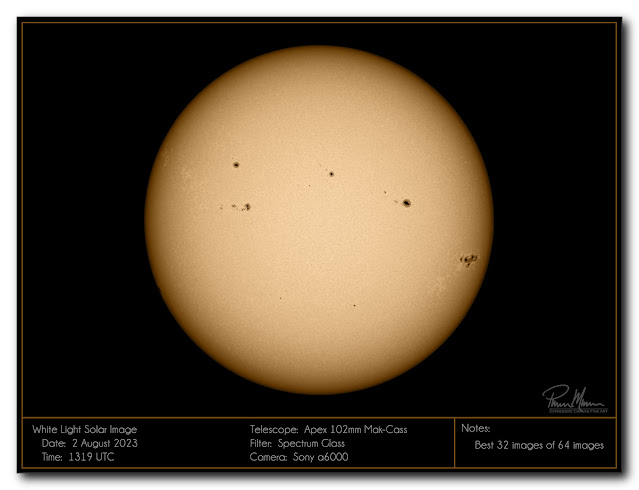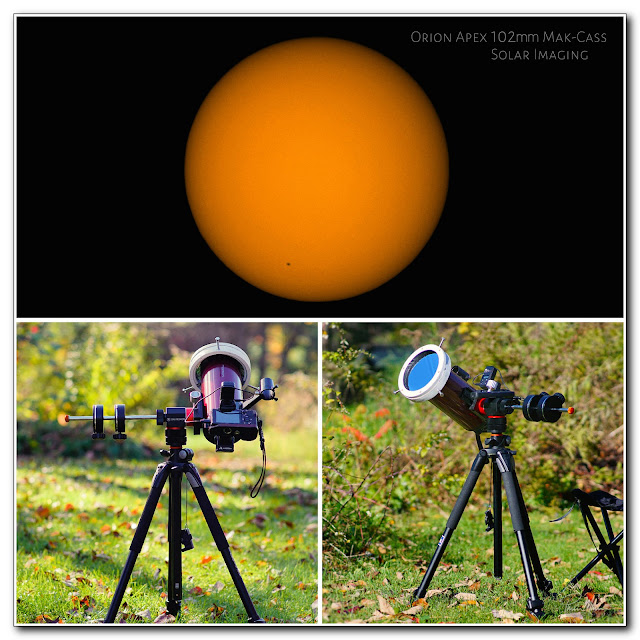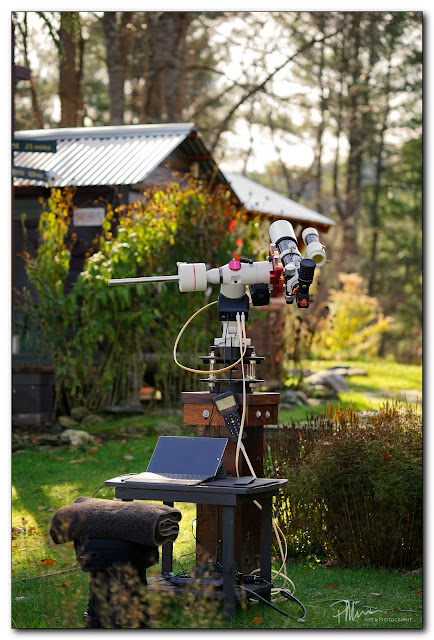Short Solar Session

W hen I got up this morning, I immediately noticed that the sun was streaming in our windows and it was a color of light that we haven't seen in quite a while. It took me a few seconds to recognized it but it was normal, bright sunshine not discolored nor diffused by smoke! When I peered out the window, I noticed that the sky was a nice blue! My first thoughts were that I should take advantage of the rare good weather to do some solar astronomy. Unfortunately, my spine still has not fully recovered from my latest spinal problems that left me crumpled on the bathroom floor a few days ago. This meant that I would need to keep my astronomy gear to a minimum to limit the amount of gear I would need to lift and carry outside. So, I decided to go back to basics with simple gear. I chose my smallest telescope (physical size)... my Apex 102mm Maksutov-Cassegrain. I chose my simplest solar filter which is a glass filter that mount...







